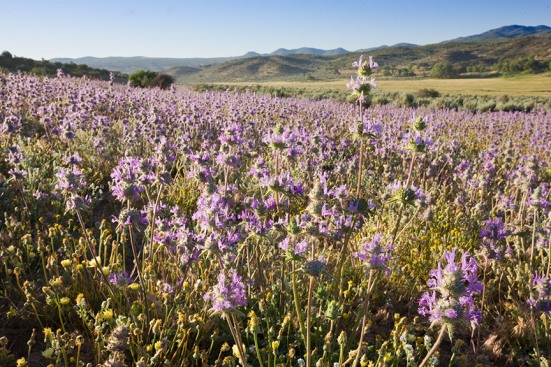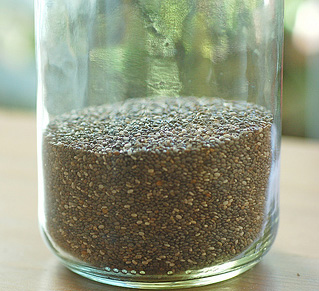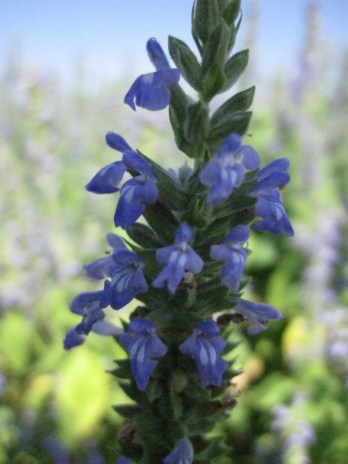Following the immensely popular article posted a few weeks ago on quinoa, I wanted to bring everyone’s attention to another «superfood», chia. If you are from the USA, you probably only know chia from the popular holiday gift, the Chia Pet. I had many over the years, and always loved watching the seeds grow; but I never knew that you could actually eat it!
Now, unlike quinoa, chia actually is a seed; and while it is not native to Peru and was not used by the Incan or any other civilization in the Peruvian area, I still am including it in our blog because of the fantastic health benefits (like quinoa) and because it comes from Latin America. So it still counts for this blog! 🙂
Chia seeds come from a flowering plant belonging to the mint family. The scientific name is Salvia hispanica. This annual herb grows over 3 feet tall and produces attractive clusters of purple or white flowers. Chia seeds typically contain 20% protein, 34% oil, and 25% dietary fiber. The oil from chia seeds contains a very high concentration of Omega 3 fatty acid – approximately 64%. Chia seeds are also gluten free!
Chia seeds were recognized as an important food item as long ago as 3500BC. Along with three other crops, maize, amaranth, and beans, chia was a significant part of the diet of Native American peoples in Central America. The Aztecs and Mayans both used this valuable plant to supplement their diets, but it was probably the Aztecs who contributed most to the importance of chia as a food crop.
In Mayan, the word “chia” means strength, and it is interesting that these ancient people recognized the invigorating qualities of the chia seed. Chiapas, the Mexican state, is named after this member of the mint family – Chiapas means “River of Chia”.
After the Aztecs had conquered most of what is now Mexico, they used their agricultural practices to cultivate chia on a large scale. As their capital, Tenochtitlan, was located on very marshy ground, the Aztecs actually used this to their advantage. They would weave mats from tree bark, float these platforms on the water, cover the mats with soil, and then plant them with chia, among other crops. It was an ingenious system that made use of an otherwise difficult agricultural site.
As the Aztecs had an aggressive, expansive culture, they often went on missions of conquest to neighboring areas. They were already well acquainted with the high energy value of chia Seeds, and their warriors carried these with them on their journeys. After a tribe had been conquered, the Aztecs would demand chia Seeds as part of the tribute that would be paid to them.
The Aztecs found chia to be so important that for some time is was used as currency by them. The seeds were also used in their religious rituals, as offerings to their gods. The Aztecs used chia Seed as a grain, either alone or combined with other grains, mixed with water as a beverage, as the base ingredient for cosmetics and body paints, and medicinally. The Aztecs used chia flour, mixed with other ingredients, to treat constipation, sore throats, colds, and as a poultice for wounds.
After the Spanish Conquest of Mexico, the cultivation and use of chia was suppressed, as it had been used in Aztec religious rituals. The Spanish conquerors were attempting to impose a new culture on the indigenous people and everything associated with the Aztec culture was actively discouraged. Chia and most of the other crops formerly grown by the Aztecs were replaced by European grains and vegetables. It is thanks to the Northwestern Argentina Regional Project that has contributed to the spread of chia cultivation from the few isolated areas in the mountains of Guatemala and southwestern Mexico, where it was still grown, to becoming commercial crop in many countries. In 2008, Australia was the world’s largest producer of chia. In 2009, chia seeds were approved as a novel food by the European Union. This decision means that chia seeds may now comprise up to 5% of a bread product’s total matter.






I love chia seeds, I add them to my yogurt everyday 🙂
That is great! Have you tried the gel from chia seeds after soaking them in water for a little bit?